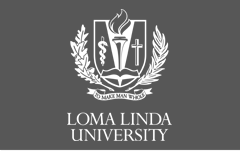Class Year
2020
Abstract
Kwashiorkor is a Ghanaian word that literally translates into the phrase “the disease of the disposed child.” It is a disease that is classical seen is an infant who was weaned form the breast milk when a new child is born. Kwashiorkor is characterized by symmetric pitting edema that begins in the lower extremities and spreads to the rest of the body as the disease progressively worsens. Other symptoms include hepatomegaly, thin peeling skin with hyperkeratosis, hyperpigmentation and bradycardia with hypotension. The major pathological insult sustained in Kwashiorkor is believed to be a dietary lack of protein. Lack of dietary proteins leads to decrease albumin and lipoprotein synthesis, causing the characteristic signs of edema and fatty liver that are seen in the disease.
Recommended Citation
Kearns, Donovan and Kagha, Karen
(2018)
"Kwashiorkor in the United States Secondary to a Rice Milk Diet,"
Loma Linda University Student Journal: Vol. 3:
Iss.
1, Article 8.
Available at:
https://scholarsrepository.llu.edu/llu-student-journal/vol3/iss1/8

